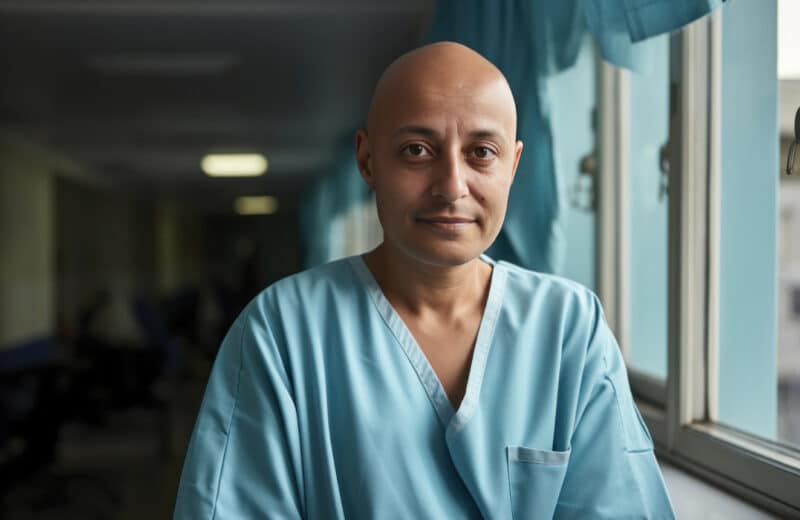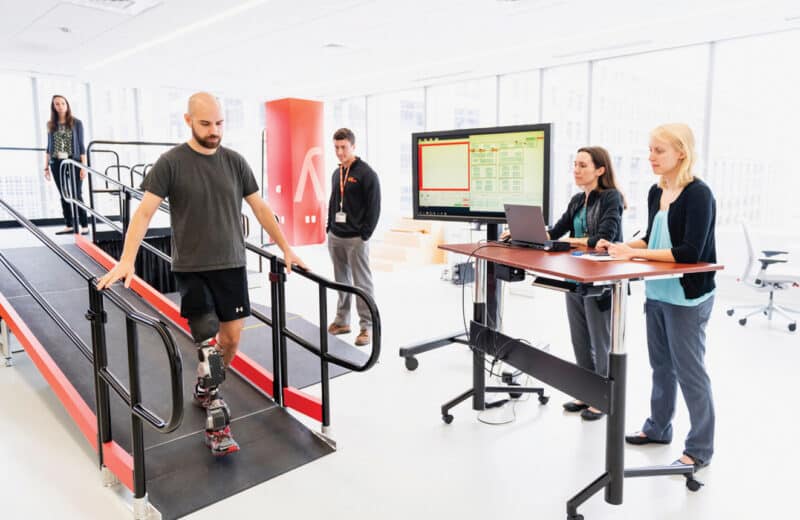A lifetime runner gets a second chance with a total knee replacement
Fear of immobility caused William Marty to postpone knee replacement surgery until it was almost too late. A professor at Moody Bible Institute in Chicago since 1980, Marty had been an avid lifelong runner. As a college student, he attended Biola University in Los Angeles on a track and basketball scholarship.
He never stopped running.
But by age 66, when Marty finally approached Dr. Richard A. Berger at Midwest Orthopedics at Rush, his right knee was almost beyond saving. “Dr. Berger said I had the second-worst knee that he had ever seen,” says Marty. “He [Berger] said, ‘Most people who have knees that are as bad as yours come in here in a wheelchair, and you’re running on yours!’”
According to Berger, Marty’s reluctance to approach an orthopedic surgeon was not uncommon. “There was a survey done that showed only three people out of 10 who needed joint replacement got it,” said Berger. “These were people with insurance who could afford it.”
For knee replacement hopefuls like Marty, who recall an earlier era of orthopedic surgery, his fears were not entirely unfounded.
“When I first got out of school, we had people in the hospital for three weeks,” says Barbara Leinonen, a physical therapist at Northwest Community Hospital since 1979. “They couldn’t even get out of bed for a week. They would have a foam boot traction on their leg, and they weren’t allowed to move at all.”
Marty, whose secretary says he has a pain tolerance of 11 on a scale of one to 10, first noticed knee pain in his 50s. Ironically, it wasn’t until the pain worsened around age 60 that he “got into the swimming and biking thing.” In 2001, Marty completed his first Chicago Triathlon on a relay team with two other Moody colleagues; his campuswide reputation as a runner made him the obvious choice after their original 10K runner became injured.
Marty enjoyed the experience so much that he decided to pursue it further. “I said, ‘I’ve been running all my life! I’ll try something different.’” He bought a bike, began routinely swimming and started entering triathlons alone.
By the time he approached Berger in 2009, Marty had completed 75 triathlons. However, the high level of activity cost him. His right knee joint had been worn down so severely that his entire leg was crooked. Berger said that if he had waited even a month longer, the surgery would not have been as successful.
Marty left the hospital the second day after his total knee replacement. He began physical therapy immediately; first at home, and later with an athletic trainer on the Moody campus.
Among the many exercises along the road to recovery, Marty noted that the daily use of an exercise bike was instrumental to regaining his mobility. Though Berger instructed him to use the bike three times a week, the ever-zealous Marty rode it daily. He began with the bike seat lifted all the way up, minimizing the use of his knee. Over the next few weeks, he would lower the seat, little by little, thus increasing the range of motion in his knee.
The hard work paid off: Six weeks after he had the surgery, Marty was jogging again. Three years later, he has completed an additional 18 triathlons and won the Chicago Triathlon in his age group.
“I’m pretty good in my age group,” said Marty, “But I was surprised that I could run pain free after surgery.”
He advises anyone considering knee replacement to act early and, unsurprisingly, to exercise. “If you’re not involved in some kind of exercise program, you really need to build up your muscles and strengthen your knee before surgery because that will help with the recovery afterwards.













